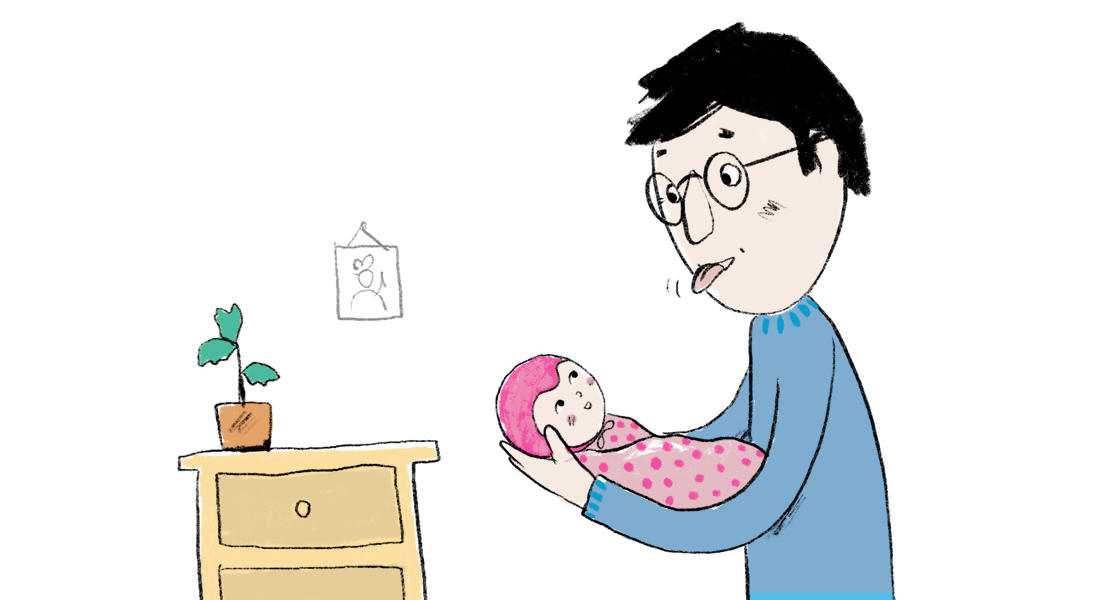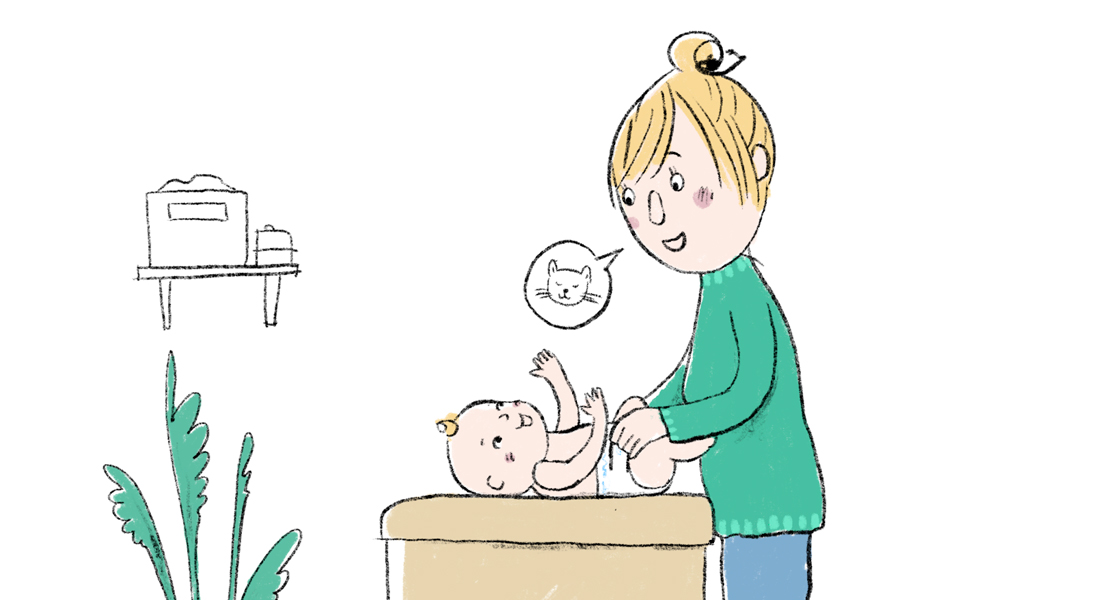What to play with your child?
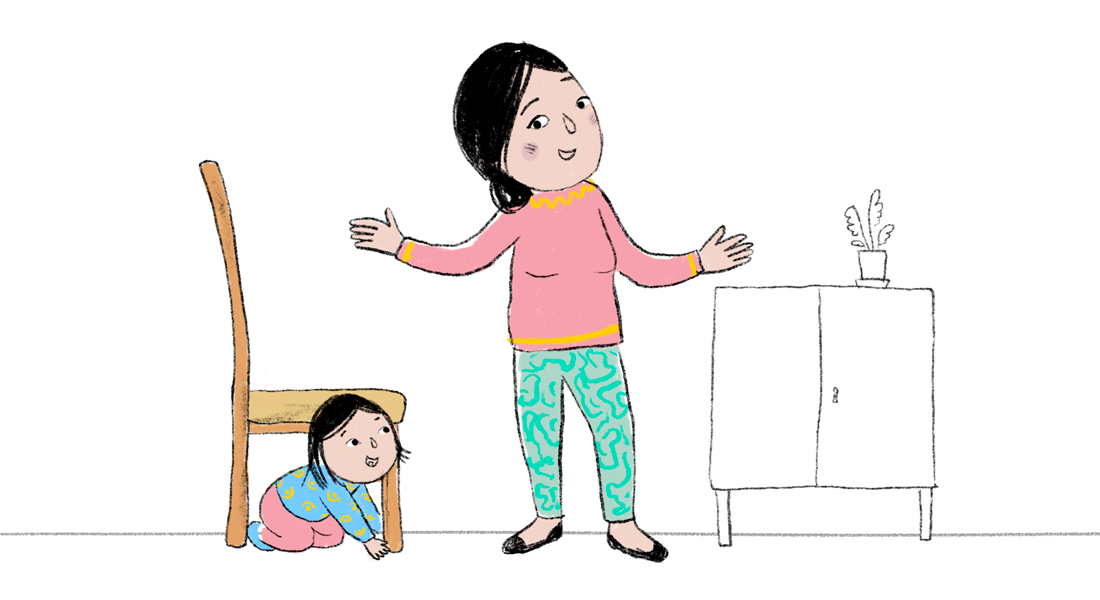
The purpose of Play and Interaction is to share knowledge and tools on how you, as a parent, can support and acknowledge your child's play and exploration - while also learning how to engage in playful and joyful interactions with your child. Play and Interaction promotes a secure attachment between you and your child and positively influences your child’s social and emotional development.
The initiative aims to support parents in what they are already doing well and reduce the uncertainty some may experience in their parenting role.
Cycling
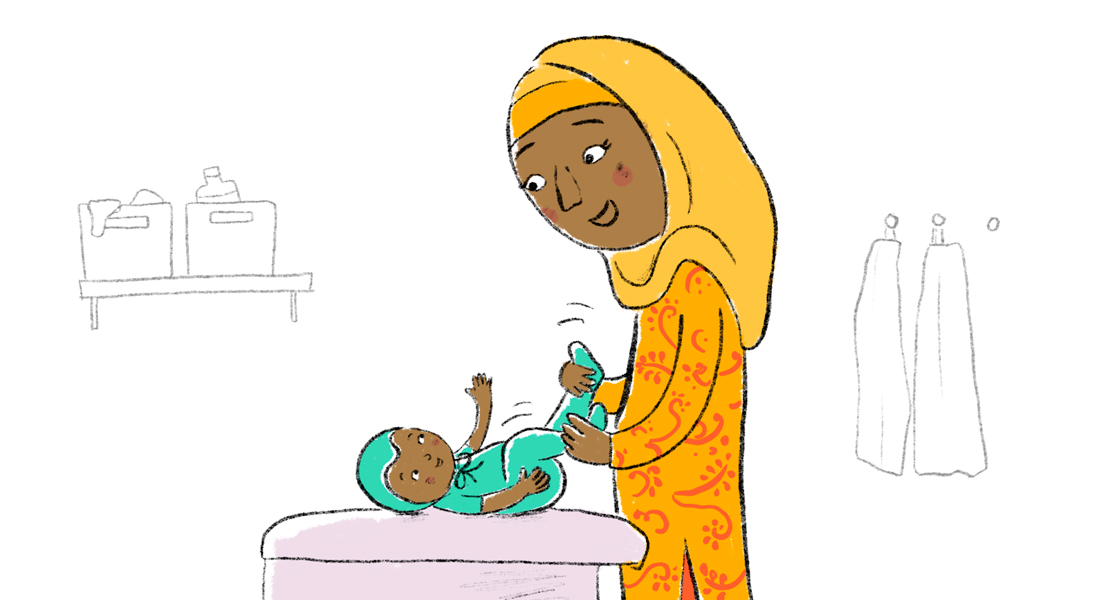
Using movement and touch is a very good way to play at this age. You can, for example, pretend that your child is riding a bike when they are lying on the floor, your lap or the changing table. Note when your child shows that they are ready to play by looking at you and through the facial expressions, movements or sounds they make. Gently hold your child’s ankles and move their legs in circles as if they are bicycling. You can use words to describe what is happening, and for example say “Cycle, cycle, cycle”. Take a short break and note whether your child seems happy, satisfied and interested. Repeat the activity for as long as it is fun for both of you. Note whether your child looks away, becomes frustrated, or in some other way shows that it is time to stop.
Looking at parents’ faces
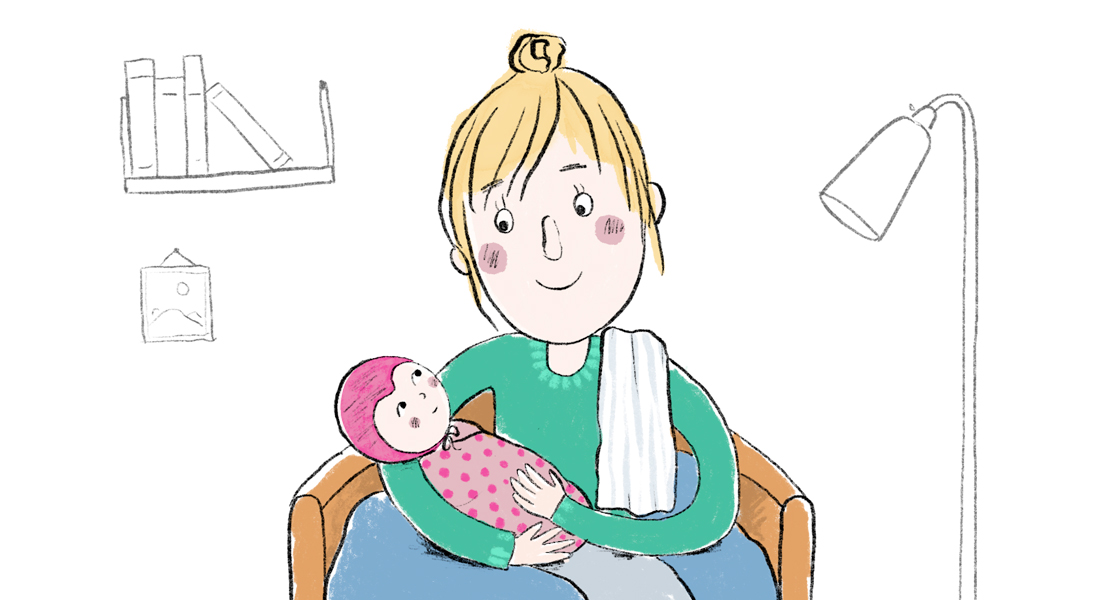
Infants enjoy looking at their parents’ faces. Most infants prefer to look at smiling faces, and at parents looking at them rather than at parents looking away. Your child can either lie on their back and look at you, or on their tummy once they start to lift their head. If your child is lying on their tummy, you can lie on your front facing your child with your face approx. 20 cm from your child's face. Making eye contact and looking at their parents’ faces is a pleasure for babies, but it can also be intense, so make sure to take breaks when your child looks away, becomes frustrated, or otherwise shows that it is time to take a break or stop.
Imitation play
From birth, your child is able to enter into a kind of mini-conversation with you when it is fed and awake, for example by maintaining eye contact with you or by making movements or sounds. When your child is awake, you can invite contact by imitating what they are doing. For example, by maintaining eye contact, or by repeating the sounds your child makes. You can also smile at them, talk to them and describe what you see them doing, or make facial expressions such as sticking out your tongue. Wait and give your child time to process what they are seeing. Perhaps your child will ‘answer’ back. Your child can use their gaze, facial expressions, sounds or movements to respond to you. Note whether your child looks away, becomes frustrated, or in some other way shows that it is time to stop. Imitation play helps your child to feel seen and heard, and to develop expectations regarding how you respond in your interaction and how an interaction works.
Look at patterns and objects
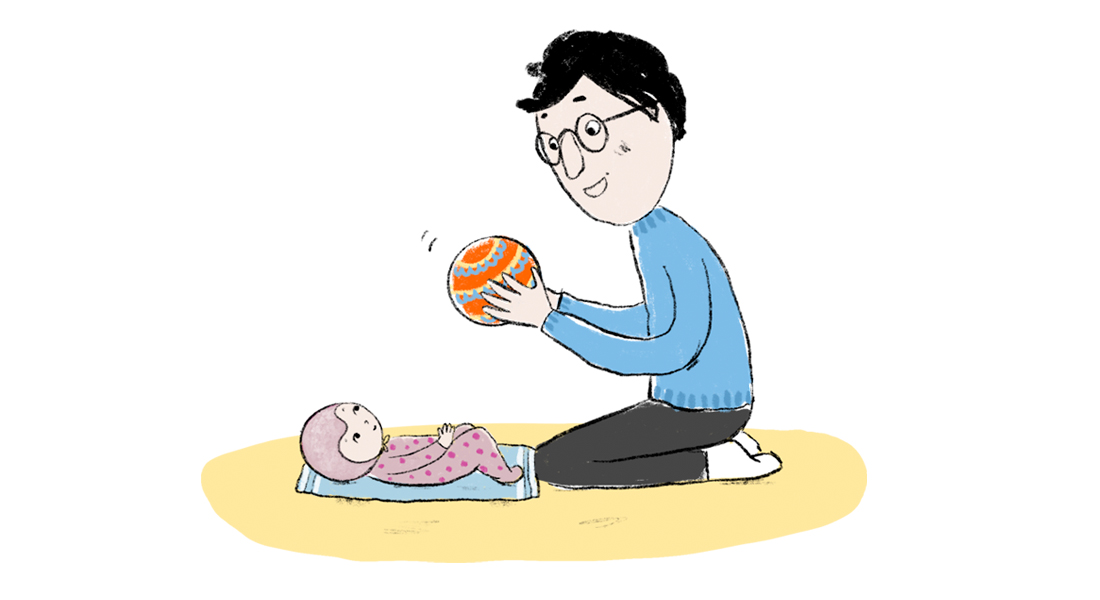
At this age, your child’s best ‘toy’ is actually your face and other people’s faces, but of course it is also fun for them to look at other things. Many infants find it interesting to look at patterns or at colourful objects. Your child’s vision is not fully developed at birth, and they can therefore only see things which are about 20 cm away. When your child is awake, content and alert, you can hold a brightly coloured object such as a ball in front of their face until they spot it. Move the ball slowly to one side and note whether your child’s gaze follows it. Slowly move the ball to the other side and note whether your child’s gaze continues to follow it. Note whether your child finds it exciting to look at the ball, and repeat the movement if they are interested. Remember that there are differences in when and how often infants find this type of play engaging.
Conversational play
Right now, your child is very focused on you, your voice, your facial expressions and establishing eye contact with you. Note when your child looks at you and makes facial expressions, movements and sounds to show that they are ready to ‘talk’ to you. Respond to your child’s ‘invitation’ by maintaining eye contact while smiling or by repeating their sounds, by making facial expressions or gestures, or by describing what you see your child doing. Be patient, wait and give your child the time it takes for them to ‘respond’ with their gaze, sounds or movements. Note whether your child looks away, becomes frustrated, or in some other way shows that it is time to take a break or stop. Conversational play helps your child to feel seen and heard and to engage in social interactions. You can engage in conversational play when, for example, your child is lying on the changing table or on your lap.
Roll from side to side
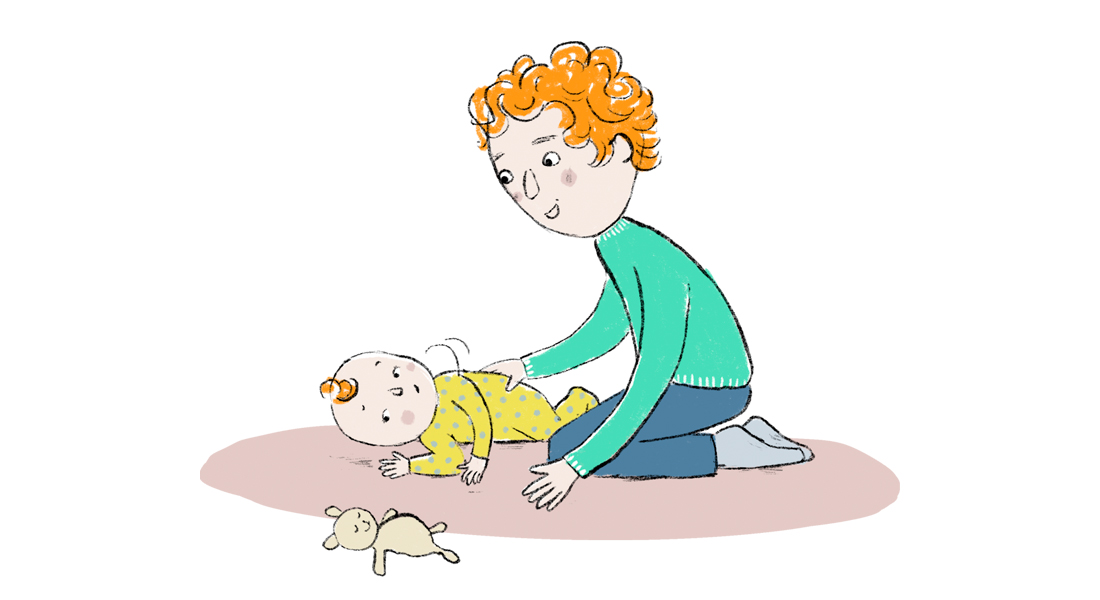
At this age, many children will begin to practise rolling from side to side by themselves. Children enjoy using their body and testing what they can do with their movements. When your child is lying on their back, you place your hands along the sides of their body to support them or you can hold their hands. Then help the child to move gently from one side to the other. Note how your child responds to the movement, and perhaps take a short break before repeating the movement. Tell your child what you and your child are doing, and what you think your child might be thinking or feeling as you play. If your child makes sounds or facial expressions, you can also mirror these to show that you are sharing your child’s experience. If the activity becomes challenging for your child, for example because they want to roll around on their own but are not yet able to, you can help your child by offering support tailored to their needs. Tailored support means that you help in a way that allows your child to cope with the challenge on their own. For example, you can gently help your child to start moving or support them with words of encouragement such as “Goodness, you’re working hard” or “You can do it!”.
Aeroplane
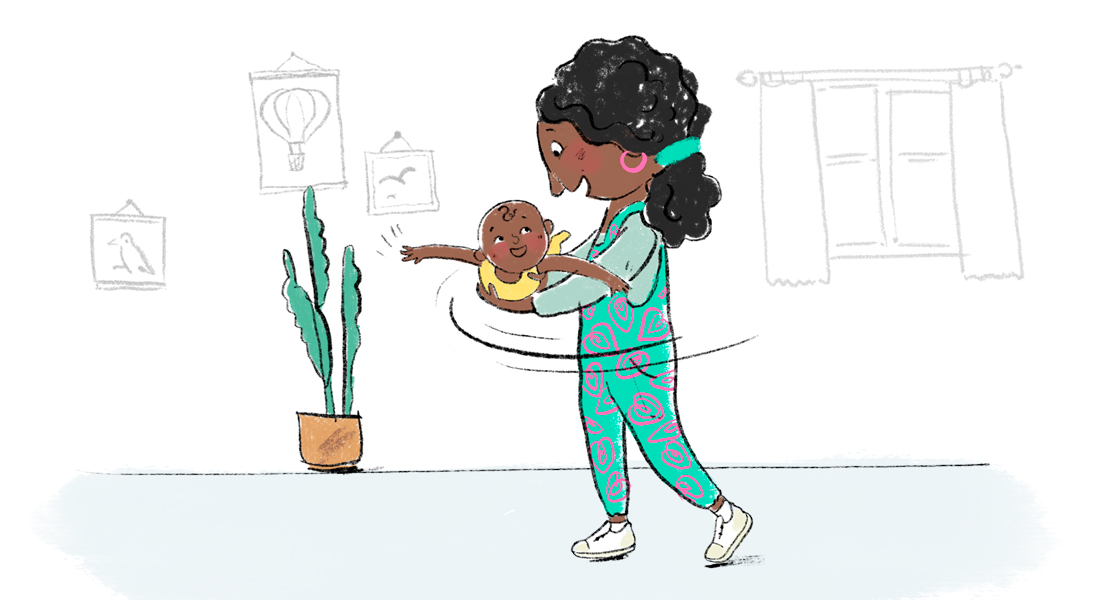
When your child can support their own head, playing aeroplane can be fun. When your child is fed, awake and ready to play, you can hold them around or under their tummy so you can move them around in the air like an aeroplane. Note your child’s facial expression, movements and sounds to see whether they are enjoying the activity. Some children like ‘flying’ at speed, while others prefer calmer movements. You can make aeroplane sounds, and describe what you are doing or what you think your child is feeling. This helps your child to feel that you are sharing the experience while strengthening their language development. Pay attention to signs that your child is switching from feeling anticipation and joy to showing that the activity is no longer nice and fun. If the activity becomes a little too overwhelming for your child, it is important that you take a break and calm them down again.
Rocking/bouncing
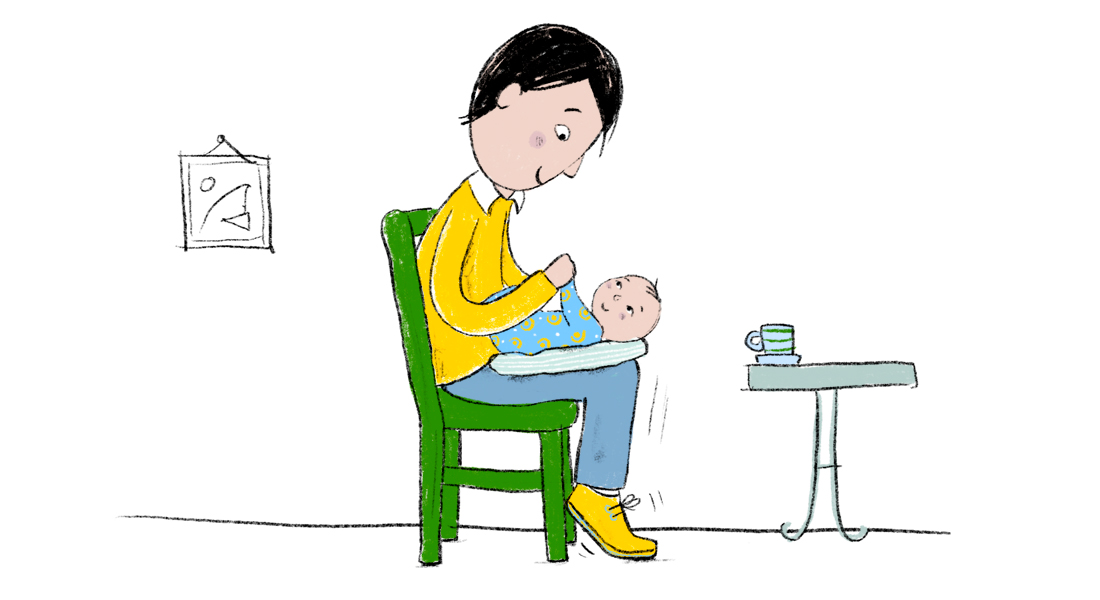
At this age, many children enjoy being rocked or bounced by their parent, such as when singing Humpty Dumpty. When your child is 2–3 months old, you can sit down on the floor and lay your child down on your lap. Move your legs up and down, or from side to side, so that your child is gently rocked up and down while you look at them. Start with gentle movements until you can tell whether your child thinks it is nice and fun. If your child enjoys the activity, you can start moving your legs faster. As your child approaches 4 months, they can sit on your lap facing you so you can see each other’s facial expressions. Hold on to your child to prevent them from slipping off when you move your legs.
Examining shape and function
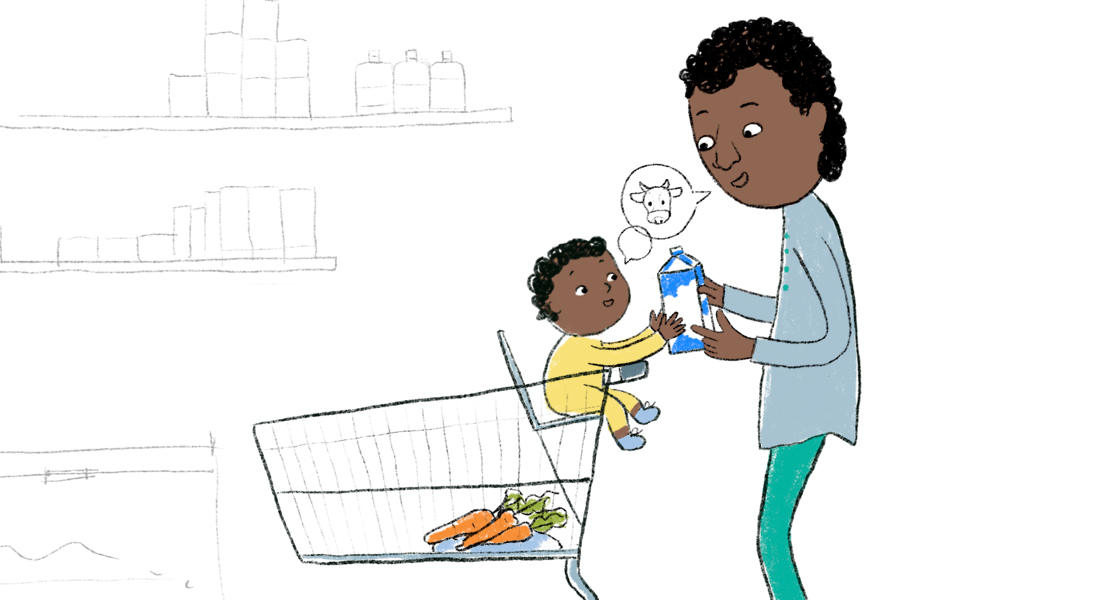
At this age, many children are curious and like examining the shape and function of different objects. Your child can show you that they are interested in looking at an object by, for example, smiling at you or making enthusiastic noises. You can share your child’s joy at examining an object by talking about what you think has aroused their curiosity. You could say, for example, “Yes, I wonder what it can do?” and you can tell your child about the object, what it is called and what colour it is. Once your child has had time to examine the object for themselves, you can show them how it can be used or what it can do. Look at your child, be patient and await your child’s response. You can examine objects and their functions with your child in all sorts of situations: if you are playing together on the floor, in the kitchen or when you are out shopping.
Excitement play
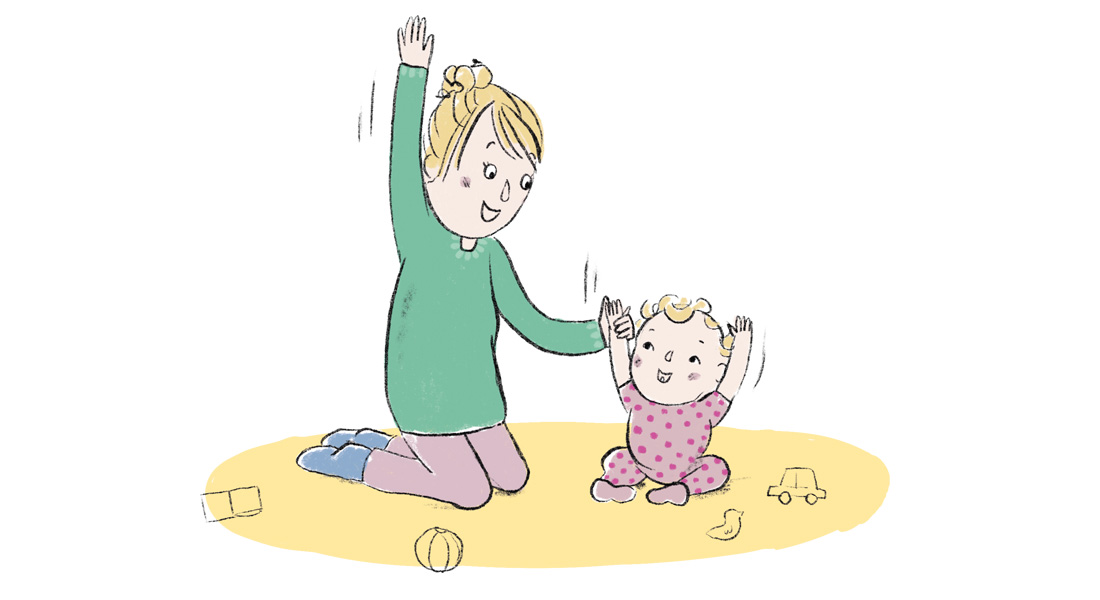
Many children find it fun to engage in play activities that follow a fixed routine and which build excitement. In other words, where playing becomes increasingly intense until it slowly winds down again. One example of this kind of play, which many parents enjoy playing with their children, is ‘How big is baby?’. When your child is ready to play, you ask them “How big are you?”, and then you lift your child’s arms up in the air while saying “Sooo big”. The routine makes your child feel increasingly excited and helps them to anticipate what is going to happen next. Once your child knows the routine, they can raise their arms themselves and perhaps excitedly say “Sooo big!”. Your child can also take the initiative by, for example, raising their arms and smiling at you. You can add to the excitement using your voice, by smiling, by pausing briefly before lifting your child’s arms, or by creating small surprises and deviations from the routine. Note whether your child finds these surprising elements fun. Also note whether your child looks away, becomes frustrated, or in some other way shows that it is time to take a break or stop.
Sensory play
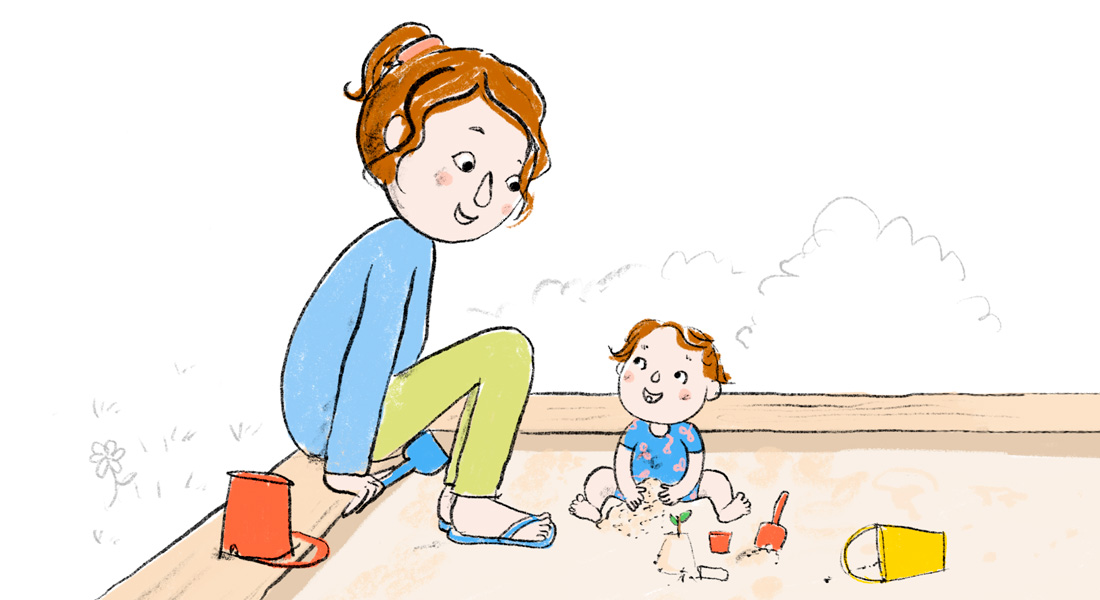
Sensory play covers playing with sand, water, food, paper or anything else that gives your child a sensory experience. Sensory play is all about using our senses to examine things – i.e. touching, looking at, smelling, tasting and listening. One form of sensory play involves playing with sand. You and your child might be playing in a sandpit or on the beach. Your child examines and feels the sand with their hands and fingers. You can show your child that you are sharing their experience by describing what you are exploring, and you can show them how to examine the sand, for example by making a small hill, digging a hole etc.
Hide-and-seek with toys
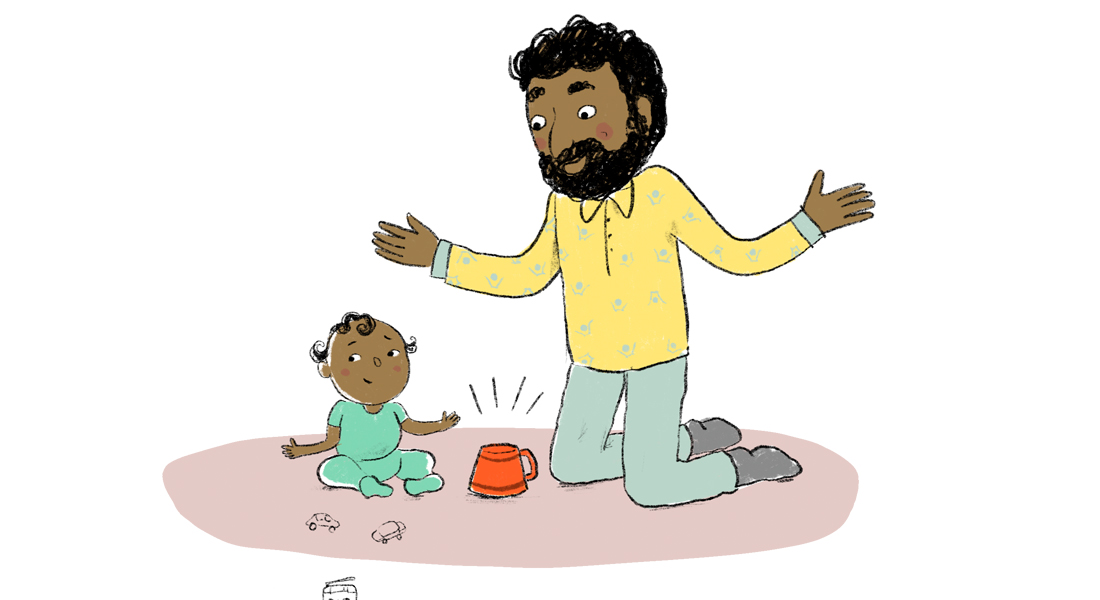
When playing with a toy, place it under a cloth, in a box or under a cup while your child is watching. Make your child interested in looking for the toy, for example by saying “Oh, where’s the car?” while looking at them. Invite your child to look for the toy together with you. When your child finds the toy, you can support and encourage them to have another go by showing your enthusiasm and saying, for example, “Hooray, you found it!”. Then, you can hide the toy again, either in the same place or in a new place nearby where you think your child will be able to find it. Show your child that you have moved the toy, and invite them again to help you find the toy. Repeat the game for as long as your child is interested and thinks that it is fun. Note if your child turns away or becomes frustrated. Find out what your child has now become interested in, or whether a break is needed.
Give-and-take play
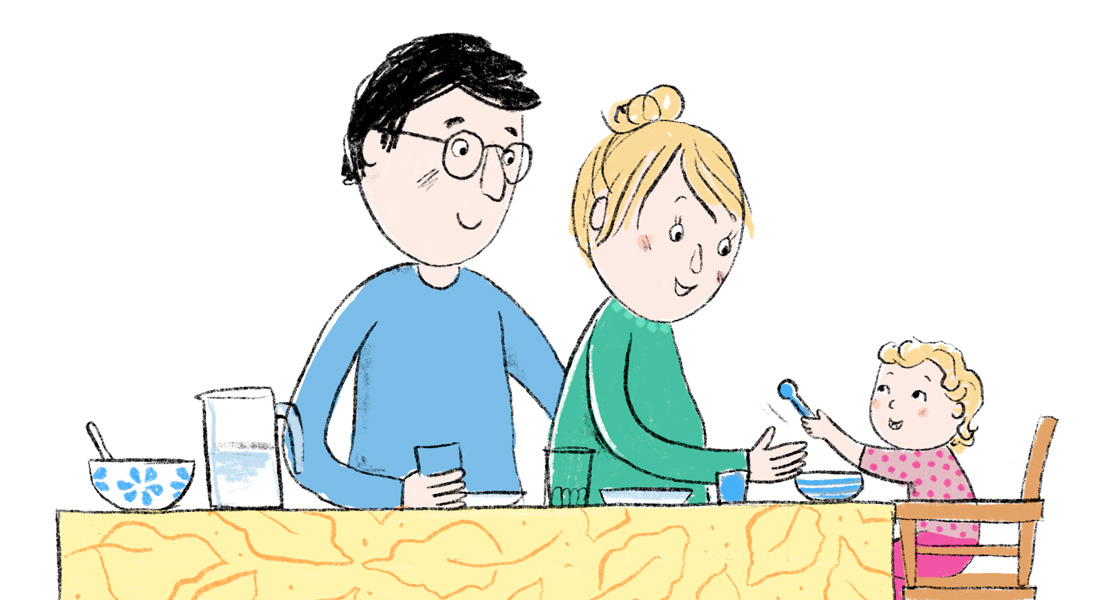
At this age, many children find turn-taking with toys or other objects fun. For example, you can play give-and-take with your child when you are both in the kitchen, when sitting at the table or when playing together on the floor. You can start playing give-and-take by giving your child a toy and then asking if you can have it back again. Say, for example: “Thank you. Here, you can have it back,” and give the toy back to your child. Once your child understands the routine, you can carry on and vary it as you please. At this age, many children also find it fun to drop small items into a container, a bowl or onto the floor. You can take turns dropping a small object into a bowl and saying “Boom!” when it hits the bottom. Another form of give-and-take is building and knocking down a tower of bricks. You build a brick tower, and then indicate to your child that it is their turn. Children are usually very enthusiastic about toppling the tower. At this age, your child is obviously unable to re-build the tower again, so this is your role, but your child can certainly help by passing you bricks.
Pretend play
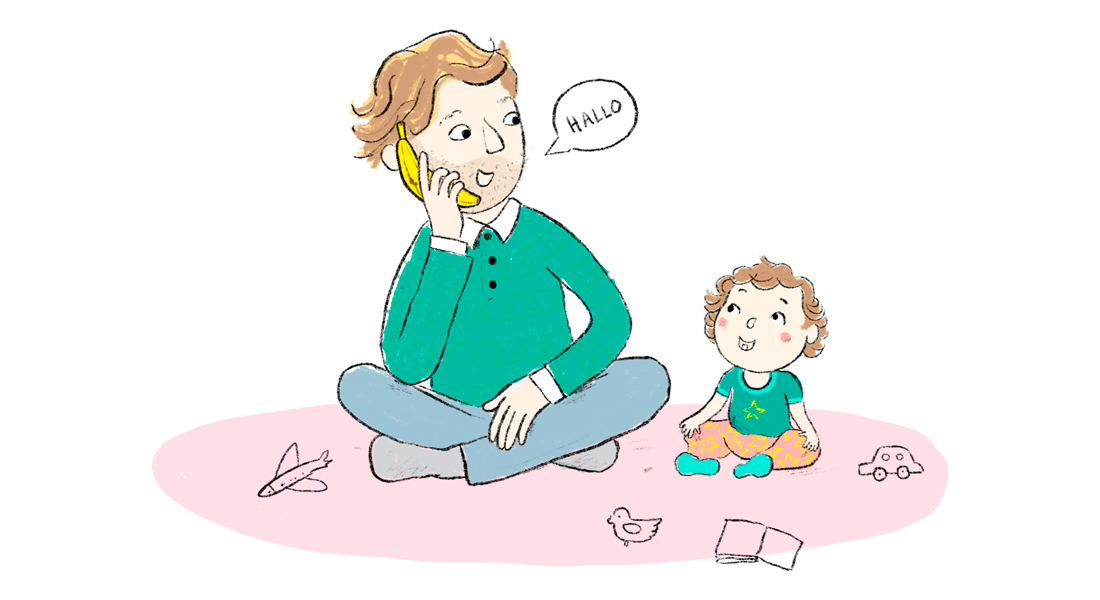
At 12 months, some children start being able to engage in simple imaginative play. In other words, they pretend to do something. For example, they might pretend drinking from an empty cup, giving their teddy bear a drink, or feeding you with a spoon. Your child will often imitate small situations from everyday life. If your child is interested in more pretend play, you can, for example, hold a banana, a shoe or your hand up to your ear like a telephone and pretend to talk on it. Pretend that you are talking to a person your child knows, for example a grandparent. After ending the call, you can make a ringing sound and pick up the ‘phone’ again, but this time pretend the call is for your child. Hold the ‘phone’ up to your child’s ear, and help your child to start the conversation by saying, “Hello” or other sounds, as if your child is talking.
Everyday chores
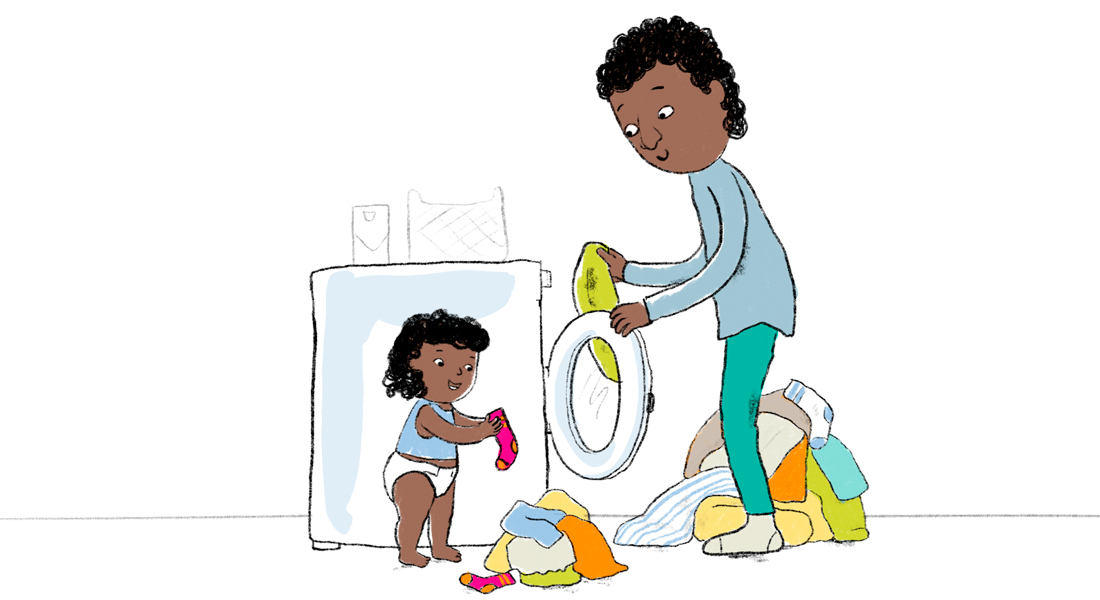
Play can also be incorporated into everyday activities, such as cooking or doing the laundry. At this age, many children have fun taking things out of containers and putting them back in again. You can involve your child in your daily chores, such as dealing with the washing, by asking them to take the laundry out of the laundry basket or putting all the socks in a pile. Do not expect your child to do the task correctly, but use the activity as a kind of play, where your child is able to pursue their natural desire to sort and move the clothes back and forth while being involved in the daily chores.
Hide-and-seek

Most children love playing hide-and-seek. Your child is now able to participate in a simple form of hide-and-seek, where you encourage them to hide and then look for them. Your child will enjoy listening to you looking for them while they keep an eye on where you are. You can add extra excitement and fun to the activity by exaggerating your movements and what you say while searching, for example by searching in silly places and saying “Perhaps Peter is in the attic? Or maybe inside the wastepaper basket?”. Share your child’s joy and excitement when you find them, and continue to play it for as long as they think it is fun. You and your child can also play hide-and-seek with toys, where you take turns hiding a toy and finding it again.
Sensory play
Sensory play can be playing with sand, water, food or anything else that gives your child a sensory experience. This kind of play is all about using our senses to examine things – i.e. touching, looking at, smelling, tasting and listening. One form of sensory play involves playing with sand. Sensory play can happen when you pass a puddle on a walk, when your child is going to have a bath etc. For example, you can help your child to create movement in the water, or let them feel how hot or cold it is. You can show your child that you are sharing their experience by using words to describe what you are exploring, or by showing them how you explore something.
Pointing and reading a book
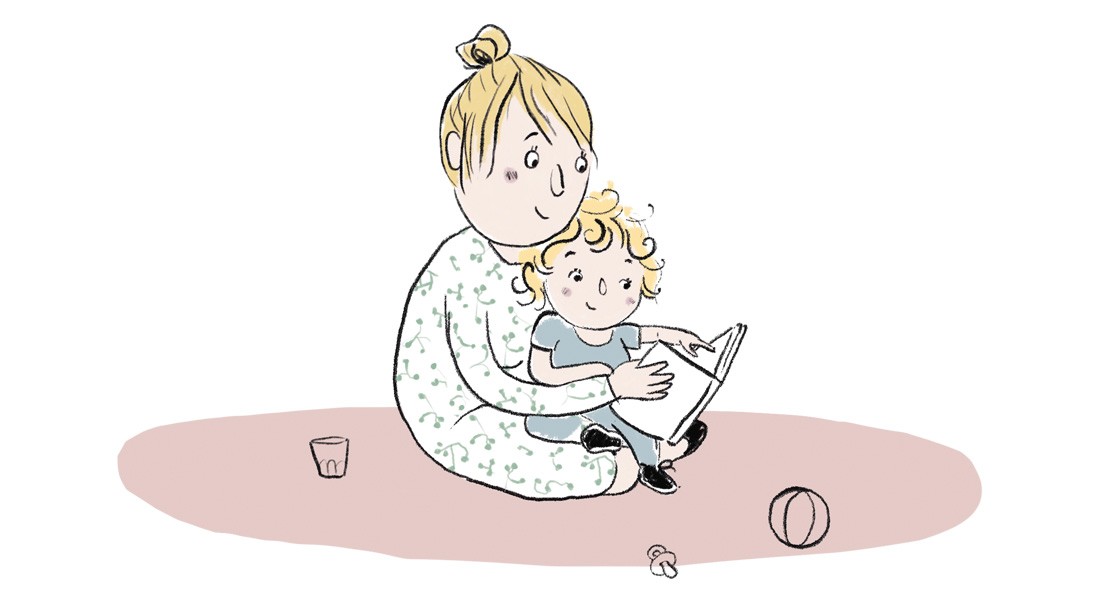
Many children find it exciting to look at pictures in books and have stories read to them. You can read to your child whatever their age. Describe what your child is looking at in the book. If your child, for example, points to a cow, you could say, “Yes, it’s a cow”. You can also ask your child questions about what you are both looking at, and ask, for example, “What sound does a cow make?”. Give your child plenty of time to respond. Look at your child and note what preoccupies them most with the book. Follow your child’s initiative in exploring the book. You do not have to read the whole book if your child is more interested in looking at a single page or two or flipping back and forth. It might also be that your child is more interested in biting the book or flipping and turning the book to examine it. Respond to any signs that your child wants to stop reading or playing, for example when they look away, become frustrated, or otherwise show that they need a break or want to stop what they are doing. When you sit down to read a book together, and you read aloud or talk to your child about what you are both seeing, it gives you a nice shared experience, and at the same time you are supporting your child’s language development.

